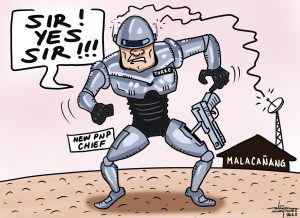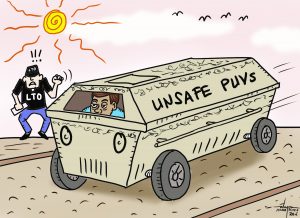 The 21st century is the century of cities, as declared by Charles Landry, author and adviser on the future of cities, best known for popularizing the Creative City concept.
The 21st century is the century of cities, as declared by Charles Landry, author and adviser on the future of cities, best known for popularizing the Creative City concept.
In his book, “The Creative City: A Toolkit for Urban Innovators,” first published in 2000, Landry said “over half of the world live in cities…yet most live in cities through need, not desire.” Most people still think it is more desirable to live in villages outside congested and polluted cities.
Landry’s solution is “to make cities desirable places to live in and be in by recreating the values that people perceive to exist in a village.” These values include a sense of place and belonging, continuity, safety, and predictability. Add to that distinctively urban qualities such as “buzz, interaction, trade, unexpected delight and much more.”
For Landry, creativity is the lifeblood of cities. The most crucial resource of a city is its people. And human cleverness, imagination, and creativity are replacing location, natural resources, and market access as urban resources. In short, the creativity of those who live in and run cities will determine its future success.
Since 2000, when The Creative City book was first published, it has been reprinted and updated at least nine times. Landry did not expect it to become big and inspire a global movement. So it just proves that many people believe that 21st century problems can no longer be solved using 19th century mindset and skills.
In the era of globalization, cities have become hubs of wealth creation and became even more important than nation states.
The challenge for cities now is to increase their “drawing power” and to get on the radar screen in an increasingly globalized world. Today, cultural power — the ability to shape things — is as important, and in some cases, even more important than economic and political power.
Davao City is proud of having transformed itself from “killing fields” to “one of the top 20 most livable cities in Asia,” making it the most livable city in the Philippines. From a “City in Bloom” in the 1990s, it became “Davao: DaWOW!” in the 2000s before boldly declaring that “Life is Here.”
We bloomed, we wowed, and then we declared that what we have here is the life we want.
But why do we feel like we have now lost our way? We are now a city of stressed people because of the traffic, the congestion, the floods, the garbage, the pollution, the disorganization and lack of direction. We seem uninspired and demoralized. We are a city in slow motion.
We used to blaze the trail for other local government units with our innovative programs and our landmark pieces of legislation that even the national government adopts and learns from us. We used to be always the first, the most, and the best. Where did that creative energy go?
In January 2019, City Councilor Pilar C. Braga, Chair of the Committee on Education, Culture and the Arts, Science and Technology, convened a diverse group of Davaoeño artists and people from the creative industries to create a roadmap to make Davao City “a leading creative city in the Philippines by 2022.”
Unfortunately, the COVID-19 pandemic interrupted our momentum. The pandemic lockdowns made us pause and we just concentrated on not dying. But the Davaoeño creative spirit bravely fought back.
When we were slowly emerging from the lockdowns, Councilor Braga sponsored another landmark legislation — the creation of the Davao City Office for Culture and the Arts, a division under the Office of the City Mayor. It is “the primary office dedicated to activating and sustaining Davao City through culture and the arts and realizing its vision to become a Creative City.”
I am happy to report that the proposal has been passed and is now a City Ordinance during the November 14, 2023 regular session of the Davao City Council. It is now a law and we are another step closer to our goal of becoming a “leading creative city.”
Councilor Braga considers this “the best gift for Davao artists and the city’s creative community” and she is grateful to her colleagues in the City Council for passing it unanimously ‘without questions asked.’
Councilor Al Ryan Alejandre, who served as executive director for the National Commission for Culture and the Arts (NCCA) and is the co-sponsor of the ordinance, said in a statement: “Davao City’s vibrant arts and cultural scene have always been a source of pride for us. Our local artists and cultural workers have showcased immense talent and creativity, contributing significantly to the cultural fabric of our thriving community.”
Vice-Mayor J Melchor Quitain, Jr., who is also an artist, hailed the ordinance as another landmark legislation. “Finally, artists from Davao City will now have a permanent office under the City Government of Davao, which will assist them in their endeavors. This development is also a result of the desire and full support of the City Mayor in upholding cultural heritage promotion and conservation in the City of Davao.”
Now that we have the legal framework and a permanent and dedicated office for culture and the arts, it is time to ask ourselves this question: How can we be a creative city?
In Landry’s first book, the original formulation of a creative city focused on the potential of cultural industries as it seemed that cities needed to focus on what made them unique and special.
Over time, it became clearer to Landry that “the economy, the political system, and the bureaucracy were all part of a creative ecology” that cities need to refocus on. There must be a shift in thinking from prioritizing the efficiency paradigm to experimentation and creativity.
To nurture creativity among Davaoeños, the city must create a good atmosphere and consider the negative psychological effects of ugly surroundings and soulless buildings that impact people’s capacity to work well. The city needs to be sensitive to culture and balance what Landry calls “globally oriented and locally authentic.” The city must attract dynamic thinkers and creators — those who have great ideas and the ability to make them happen, too.
There needs to be soft creative infrastructure in place that includes overall mental infrastructure and mindset of the city. Creativity is not just about creating something new. It is having the flexibility to review and reassess situations. It is the ability to be brave to change things when needed and the sound judgment to keep things as they are and the wisdom to have an open mind. In short, history and creativity are great partners. As Landry pointed out, great achievements are combinations of the old and the new.
Davao City needs to do more to achieve its goal of becoming a “leading creative city.” The most important condition for creativity is “open-mindedness and the capacity to listen.” I believe we are a city of creative people and we deserve leaders who reflect that quality and embody that spirit. Our future as a city depends on it.


